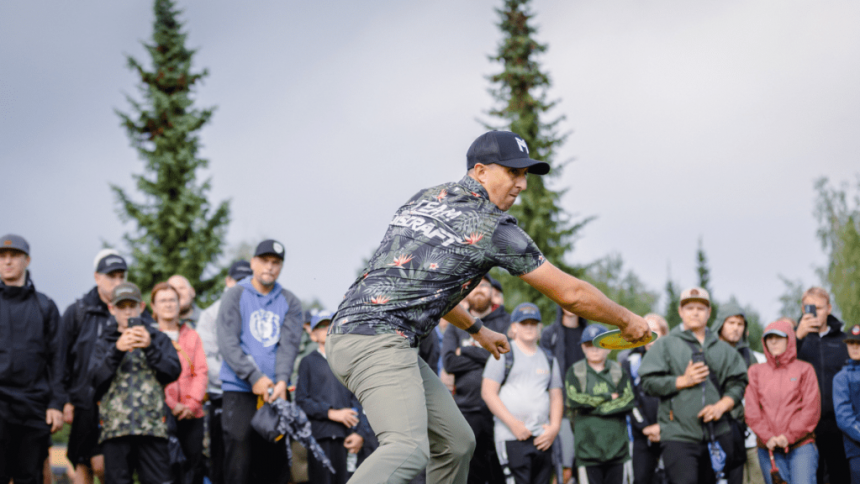Disc golf, also known as frisbee golf, is a fun and challenging outdoor sport that requires skill, patience, and practice. Whether you’re a seasoned player or just starting out, mastering the essential techniques of disc golf is crucial for improving your game and reaching your full potential. In this article, we’ll explore the ropes, sharing the most important disc golf techniques for beginners to help you get started and progress to the next level.
The Fundamentals
Before we dive into the specific techniques, it’s essential to understand the basics of disc golf. Here are the fundamental rules and objectives:
- Objective: The objective of disc golf is to throw a disc towards a metal basket or target, known as a pole hole, in as few throws as possible.
- Teep: The first throw, also known as a teep, is taken from a designated teeing area.
- Par: The par rating of a course is the number of throws a skilled player is expected to take to complete a hole.
- Score: The total number of throws taken to complete a round of golf is the player’s score.
Grip and Stance
The way you grip and stand while throwing a disc is critical for accuracy and power. Here are some tips:
- Grip: Hold the disc with your thumb on top and your fingers on the rim, using a firm but not too tight grip.
li
Stance: Stand with your feet shoulder-width apart, with your weight evenly distributed between both feet. Keep your knees slightly bent and your back straight.
Body Positioning: Keep your body aligned with the direction you’re throwing, with your shoulders square to the target.
Mastering different throwing techniques is vital for success in disc golf. Here are the basic throws:
- Fundamental Throw: This is the most common throw, where you release the disc with your arm extended, using your wrist and fingers to generate spin.
- Ritchey Throw: Named after the legendary disc golfer John Ritchey, this throw involves releasing the disc at a 45-degree angle, using your upper body to generate power and accuracy.
- Overhead Throw: This throw involves throwing the disc overhead, using your entire body to generate power and spin.
The type of disc you choose can greatly impact your performance. Here are some key factors to consider:
- Disk Type: Fairway drivers, mid-range discs, and putters are designed for different shot types and distances.
- Material: Discs are made from various materials, each with its own unique properties, such as speed, glide, and fade.
- Flex: The flex of a disc refers to its ability to bend and deform during flight, affecting its trajectory and stability.
As you begin to master the fundamentals of disc golf, here are some additional tips to help you improve:
- Practice Regularly: Regular practice helps develop muscle memory and improves your technique.
- Analyze Your Throws: Take notes on your throws, paying attention to your form, grip, and release, to identify areas for improvement.
- Fine-Tune Your Form: Make adjustments to your grip, stance, and throwing technique to improve accuracy and power.
- Join a Disc Golf Community: Connect with other disc golf enthusiasts, join online forums or local clubs, to learn from others and share tips and advice.
Mastery of disc golf techniques takes time, patience, and practice. By understanding the fundamentals, mastering the grip and stance, and learning different throwing techniques, you’ll be well on your way to becoming a skilled disc golfer. Remember to practice regularly, analyze your throws, and fine-tune your form to improve your game. Most importantly, have fun and enjoy the experience of playing disc golf with friends and like-minded enthusiasts.
FAQs
What is the best way to hold a disc for a fundamental throw?
A: Hold the disc with your thumb on top and your fingers on the rim, using a firm but not too tight grip.
What is the primary difference between a fairway driver and a mid-range disc?
A: Fairway drivers are designed for longer throws, while mid-range discs are designed for shorter shots and more control.
How can I improve my throwing technique?
A: Practice regularly, pay attention to your form and grip, and make adjustments as needed to improve your accuracy and power.
What are some common mistakes beginners make in disc golf?
A: Some common mistakes include throwing too hard, not releasing the disc correctly, and not paying attention to body positioning and alignment.
How do I choose the right disc for my game?
A: Consider factors such as disk type, material, and flex when selecting a disc that suits your playing style and goals.
Can I play disc golf anywhere?
A: While you can play disc golf anywhere with open space, official disc golf courses typically have marked holes, teeing areas, and obstacles designed for the game.








